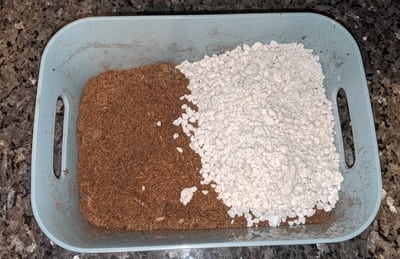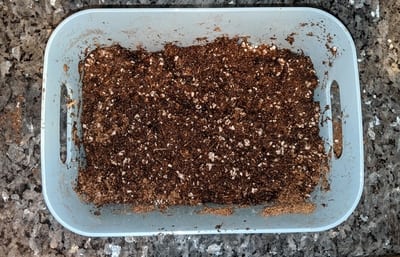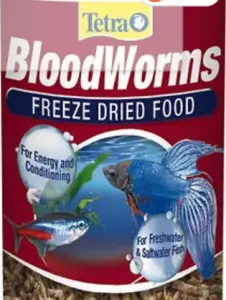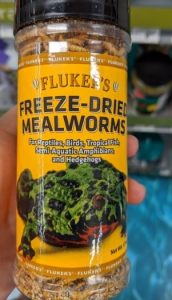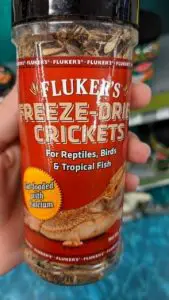Carnivorous plants are fascinating, but they require a particular environment to survive. This article will cover all the details on how to care for carnivorous plants. It includes details about Pitcher plants, Drosera, Venus flytrap, Cobra plants, and more.
Carnivorous plants thrive in humid and nutrition-less environments with plenty of water, sunlight, and access to feed. Temperate carnivorous plants require a dormancy period and tropical carnivorous plants prefer a stable temperature year-round.
Here is a summary of the most critical care tips for carnivorous plants. Continue reading the next sections of the article to get a more in-depth view of each item.
- Employ pure water sources for carnivorous plants: distilled water, reverse osmosis water, or rainwater.
- Expose carnivorous plants to plenty of sunlight.
- Water often and keep the soil moist at all times.
- Do not overwater. Carnivorous plants are prone to root rot.
- Standard potting soil can kill your plant. Only use nutrient-free mineral-free soil.
- Place carnivorous plants outside so they can capture bugs or feed them yourself!
- Never feed carnivorous plants with human food!
- Humid environments are beneficial but not necessary.
- Do not fertilize carnivorous plants.
- Extreme temperatures can kill your plant. Do not burn them, and do not let them freeze in the winter.
- Some carnivorous plants require a dormancy period.
- Trimming is optional. Carnivorous plants will lose leaves as they grow. You can trim the dead leaves as they appear.
- Avoid terracotta, unglazed ceramic, glass, and metal pots.
- Do not plant carnivorous plants in a closed terrarium.
- Avoid unwanted stress and motion.
- Keep an eye for pests and fungus. Carnivorous plants are prone to the usual suspects!
Now that you read over the primary care tips, you need to learn the in-depth aspects of caring for carnivorous plants. Growing carnivorous plants is not difficult, but small mistakes can accidentally kill these plants.
Carnivorous Plant Care Instructions
1.- Employ pure water sources for carnivorous plants: distilled water, reverse osmosis water, or rainwater.
Carnivorous plants live in nutrition-less environments. They are not used to receiving nutrients through the soil or water. Do not water carnivorous plants with tap water or bottled water. They contain too many nutrients or minerals. Instead, employ pure water sources: distilled water, reverse osmosis water, and rainwater.
Technically, you can water carnivorous plants with tap water. It is only safe to do it if the water has less than 50 parts per million (ppm). This measurement refers to the number of dissolved solids in the liquid. You can employ a TDS (Total Dissolved Solids) meter to confirm the ppm readings. However, do not be surprised if the tap water in your home exhibits high levels of minerals or other components.
2.- Expose carnivorous plants to plenty of sunlight.
All carnivorous plants benefit from access to sunlight. They require plenty of light, either indirect or direct. Never place them under complete shade; they will suffer greatly. They must receive at least 4-6 daily hours of light.
Carnivorous plants can be grown outdoors and indoors. However, it is easier to grow them outside as they can have access to sunlight. The only challenge when placing them outdoors is heat exposure due to direct sunlight. You must place these plants under sunlight, but they shouldn’t heat up until they burn. When growing indoors, ensure the plants live on a sunny porch or windowsill. The alternate option besides sunlight is artificial light. High output fluorescent lights and LED plant lights are suitable candidates.
The lighting requirements for Venus flytraps and North American Pitcher plants lower during the winter while they are dormant You will learn all about dormancy in the 10th item.
3.- Water often and keep the soil moist at all times.
Carnivorous plants thrive in humid environments. Keep the soil moist at all times to keep them healthy.
Most carnivorous plants prefer a humid environment, where the soil is moist but not soggy, like, for example, the Venus flytrap. Other carnivorous plants like the Pitcher plant or Sundew prefer more soggy conditions.
An effective way to water your carnivorous plants appropriately is to use the water tray strategy. Place the plant pot on top of a water tray. Then, add about half an inch of water to the tray. Let your plant absorb the water and refill once the container has just dried up. The roots of the plant will “drink” the water, and the soil remains moist at all times. Also, the water in the plate increases the humidity in the environment.
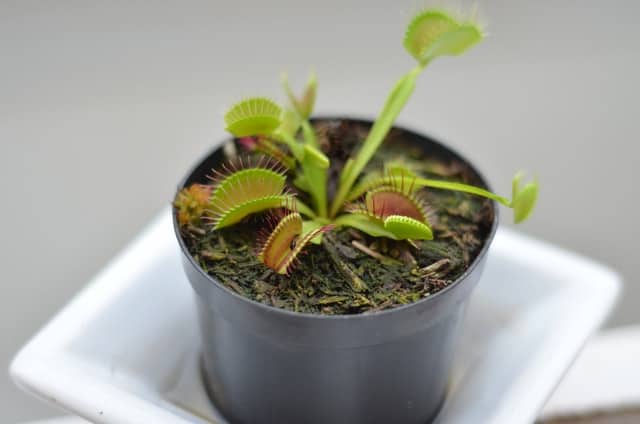
4.- Do not overwater. Carnivorous plants are prone to root rot.
Carnivorous plants benefit from humid environments. But excessive watering can also harm the plant. Carnivorous plants do not like to sit on standing water for long periods. They need water, but it should be flowing at all times.
Since carnivorous plants are prone to root rot, you must always water appropriately. The water tray method is a great option to prevent overwatering. Also, always employ pots with a drainage hole and soil with good drainage. Besides, consider repotting your plant every year to avoid soil compression, which slows down the drainage process.
5.- Standard potting soil can kill your plant. Only use nutrient-free mineral-free soil.
Before you buy potting media for your carnivorous plants, you must forget all you knew about potting soil. In the wild, they grow in inferior soil. Carnivorous plants can not be potted in standard potting soil as they have grown intolerant to fertilizers and minerals from the ground. Instead, you must employ nutrient-free carnivorous plant soil. Nutrients or components in the earth harms them.
You can buy carnivorous plant soil online or make it yourself. Several sellers in Etsy and Amazon offer good quality carnivorous plant soil. It is practical to buy the soil online, but it is expensive compared to the DIY option. Here is how you make carnivorous plant soil:
First, you need one type of moss, either long-fibered sphagnum moss or peat moss, and a draining agent: sand or perlite. The materials you choose must be pure and unenriched. For example, when buying peat moss, avoid Mineral Grow options. Those bags of peat moss are enriched and filled with fertilizers (which kill carnivorous plants. Most nurseries offer nutrient-free moss, perlite, and sand. Just make sure to specify you are looking for nutrient-less media for carnivorous plants.
Here are a few recipes to make carnivorous plant soil:
- 4 part peat moss and 1 part perlite
- 3 part sphagnum moss and 1 part sand
- 1 part peat and 1 part sand
- 1 part sphagnum and 1 part perlite
- 1 part peat, 1 part sphagnum, and 1 part sand
It is possible to grow carnivorous plants in pure peat moss or pure sphagnum moss. However, those potting mediums are not optimal. Without a draining agent, water does not flow properly.
6.- Place carnivorous plants outside so they can capture bugs or feed them yourself!
Carnivorous plants obtain most of their nutrients through photosynthesis. As a way to supplement their diet, they have developed trapping mechanisms to capture and digest bugs. The insects they consume boost their diet and stimulate growth.
Carnivorous plants can capture their own prey when placed outdoors. The mechanisms they developed to lure bugs are very effective. You do not need to feed outdoor plants, as they have plenty of access to bugs.
Indoors, carnivorous plants need some help from their owners to capture prey. Depending on the access to insects, carnivorous plants might catch bugs indoors, but it is improbable. Consider feeding indoor plants to boost their growth. Carnivorous plants consume various types of insects, such as flies, ants, beetles, crickets, gnats, and slugs. You can buy live or dead feed in most pest stores.
7.- Never feed carnivorous plants with human food!
There is some misinformation online about feeding human food to carnivorous plants. Carnivorous plants are designed to consume insects and spiders. But, they do not have the capabilities of consuming human food such as fruit, hamburger, candy, and chicken.
Technically, carnivorous plants can digest meat. On rare occasions, large Pitcher plants or Venus flytrap capture a tiny frog or a very young rodent, and they can extract nutrients from them. However, you should never attempt to feed your plant with anything other than bugs. The plant might not be able to digest it. If that happens, the leaves containing the food will wither, and the food will start to rot. It will not only cause unwanted odors, but it can attract bacteria and mold ( this is how you can get rid mold)..
8.-Humid environments are beneficial but not necessary.
In the wild, carnivorous plants live in humid conditions. They are exposed to humidity levels between 50-90% year-round. But they are adaptable to less humid environments.
Carnivorous plants thrive in humid environments, but the humidity is not a decisive factor for all plants. For example, Venus flytraps can adapt to arid environments as long as they are adequately watered. Pitcher plants, on the other hand, might struggle to develop pitchers in dry climates.
If you live in a humid location, then you are all set to grow carnivorous plants. But, if you live in a dry area, I have some solutions for you:
- Consider using a humidifier. As long as it runs for consistent amounts of time, the environment will hold more water.
- Place the plant pots on top of a water tray.
- Mist the plants.
9.- Do not fertilize carnivorous plants.
Novice growers should never fertilize carnivorous plants. The nutrients and minerals in fertilizers can harm the plants and cause mineral burns. Instead of fertilizing, consider feeding the plant. It will have the same effect. However, feeding does not poss the same risk as fertilizing.
Never attempt to fertilize carnivorous plants if you are unsure of the procedure or if the plant is not at optimum health. A safe option to fertilize carnivorous plants is to employ foliar fertilizers. These are the instructions:
- Dissolve the foliar fertilizer to decrease its intensity to 10-25%.
- Spray the leaves lightly with the dissolved fertilizer.
- Do not fertilize carnivorous plants during dormancy.
10.- Extreme temperatures can kill your plant. Do not burn them, and do not let them freeze in the winter.
Carnivorous plants can classify into two types; temperate and tropical. Temperate plants can withstand more extreme temperatures, and they require a dormancy period. Tropical plants are used to a consistent temperature year-round, and they do not require a dormancy period.
Venus fly traps, North American pitcher plants, Cobra plants, and some Sundews are temperate plants. They require dormancy and can withstand colder weather. Generally, follow this advice:
- During summer and spring, do not let the plants be exposed to temperatures above 95 F (35 C).
- During winter, do not let the plants freeze.
Asian pitcher plants, Sun pitchers, West Australian pitcher plant, some Butterworts, and some Sundews are tropical plants. They do not require dormancy, and they prefer temperate climates.
11.- Some carnivorous plants require a dormancy period.
Now, it is time to talk about dormancy. Some carnivorous plants require dormancy, like for example:
- Venus fly traps
- North American pitcher plants
- Cobra plants
- Sundews (some varieties)
Dormancy is crucial for these plants. During this period, the plant rests and prepares to start the growing season. Dormancy is critical for these plants as they will die if they skip dormancy a few years in a row.
Carnivorous plants go dormant when they are exposed to chilly temperatures (45 F / 7 C) at the start of the winter. Then, they should remain dormant for several months. Venus flytraps experience a dormancy that lasts an average of three months. Some drosera species expect 6 or up to 9 months of dormancy. Research about a specific specie of carnivorous plants and learn about their dormancy requirements. They are of crucial importance.
12.- Trimming is optional.
Carnivorous plants will lose leaves as they grow. When leaves start to wither, let them dry up completely. Once they have entirely withered, trim them. Employ scissors and chop them off. There is no risk of removing dead leaves. In the wild, foliage decomposes a lot faster due to the number of microorganisms in the soil. At home, it will take years for the foliage to decompose on its own. It is better to trim it off and provide more space for your plant.
Do not be alarmed when a pitcher starts to wither, or a leaf begins to blacken in your carnivorous plant. As one leaf withers, a new one will begin growing. Only get alarmed an investigate if you notice your plant is losing leaves without growing new ones.
13.- Avoid terracotta, unglazed ceramic, glass, and metal pots.
Some pots are unsuitable for carnivorous plants. Do not employ pots made out of:
- Terracotta
- Unglazed ceramic
- Glass
- Metal
Terracotta and unglazed ceramic pots leach minerals to the soil, and those minerals are harmful to the plant. Also, both of those materials tend to absorb water and dry up the environment, defeating the purpose of continually watering to provide a humid medium.
Glass and metal pots do not leak elements to the ground, but they are terrible insulating materials. It is dangerous to pot carnivorous plants in these materials and expose them to direct sunlight. The pots can overheat and boil the plants. Similarly, the materials are dangerous during the winter, as they do not provide insulation against cold weather. Only employ these materials in mild weather.
The best pot materials for carnivorous plants are glazed ceramic and plastic. Both of those materials do not leach any components to the sale, they do not absorb the moisture, and they provide insulation. Also, Styrofoam containers are an alternate option. They offer the same benefits and are inexpensive.
Besides the material choice, make sure the pot you choose has a drainage hole. Without a drainage hole, growing carnivorous plants is exceptionally challenging.
14.- Do not plant carnivorous plants in a closed terrarium.
Growing carnivorous plants in a terrarium is a dream aesthetically, but it can be tough. Carnivorous plants thrive outdoors. When they are placed in an indoor terrarium, they suffer. The only benefit of putting them in a closed terrarium is the high humidity. But, for a single benefit, there are many disadvantages.
Inside a closed terrarium, it isn’t easy to provide enough lighting. The glass acts as a barrier. Also, if placed under direct sunlight, the terrarium heats up and kills the plants inside. Besides, carnivorous plants do not have any access to feed in a terrarium. The humidity in the terrarium is beneficial, but improper drainage and water flow can increase the chances of root rot.
Terrariums are especially harmful to temperate carnivorous plants. Inside a terrarium, carnivorous plants can’t achieve dormancy in the winter. Therefore, they will end up dying after just a few years.
Avoid closed terrariums, especially if you are a beginner carnivorous plant owner. Instead, consider building a greenhouse type terrarium. These terrariums are usually made of large fish tanks. They close, but they can open easily. Each plant has its individual pot and container, so temperate plants can leave the terrarium during the winter and go dormant. If the greenhouse terrarium is big enough, you can place LED lights inside the terrarium to fulfill the plants’ lighting requirements.
15.- Avoid unwanted stress and motion.
Plant lovers consider their plants to be pets. But in reality, most plants do not like to be petted. Constant touching or handling can cause strain on the leaves and bruise them or damage them. Carnivorous plants are no different.
You can touch the plant without harming it. However, it would help if you abstained from playing with the bug-catching mechanisms. Please do not poke the traps in Venus flytraps to close and do not poke Sundews to make them react and fold. Carnivorous plants can’t harm you. They are too small to produce any damage to a human. However, the added stress you impose on the plant can harm it. If you want to observe their carnivorous nature, feed them. Then the plant can obtain nutrients, and you can watch the process.
Place the carnivorous plant in a strategic location where they won’t undergo too much movement. For example, cats, dogs, and small children tend to be amazed by the unique colors and shapes of carnivorous plants, and they can be too rough interacting with the plants.
16.- Keep an eye for pests and fungus. Carnivorous plants are prone to the usual suspects!
Pests and fungus affect carnivorous plants without prejudice. Many different pests can affect carnivorous plants, including some specific for certain species.
Routinely inspect your plant for unusual changes, such as deformities, decoloration, color spots. The solution will vary depending on the problem. Fungus infections can be eradicated with a sulfur-based fungicide; miticide is the answer to eliminate mites. Consult your local nursery for specific fungicides or insecticides.
How to Choose the Right Carnivorous Plant
Before choosing a carnivorous plant, you must analyze your environment. The first factor to consider is dormancy. Choose a temperate carnivorous plant only if you can fulfill the dormancy requirement. Otherwise, consider only tropical plants. Technically, you can grow tropical plants almost anywhere as you can grow them indoors and provide a humid/ warm climate.
These plants are considered to be beginner plants for carnivorous plant growers:
- Sarracenia
- Venus flytrap
- Drosera
The Sarracenia and Venus flytrap both require dormancy and the requirements of Drosera vary. In terms of availability. Venus flytraps are one of the best starter plants as they are sold commercially at a low price. If you choose Venus flytrap, make sure to read this article and learn more about them. The article includes a downloadable care sheet.
and learn more about them. The article includes a downloadable care sheet.
Seeds vs Plant
After choosing a carnivorous plant, it is time to make another decision: is it better to buy seeds or a plant?
Growing carnivorous plants from seeds is a unique experience as you can ultimately observe the whole growth cycle. However, sowing seeds it risky. The seeds are prone to fungal attacks. Also, the seeds will take a few weeks to germinate. Then, the plants will be tiny, and they will take years to reach a mature size. Only attempt to grow carnivorous plants from seeds if you are patient and very meticulous. The plants will be tiny for a long time.
As a beginner, growing plants is much more appropriate. You can buy a young or mature plant and perfection your setup. After mastering how to care for your plant, then it is time to consider growing them from seeds or through propagation. Mature carnivorous plants produce flowers. The flowers are an opportunity to pollinate them and harvest seeds.
Where to Buy Carnivorous Plants
You can buy carnivorous plants in the following locations:
- Walmart, Home Depot, Lowe’s, and other big-box stores
- Local nurseries
- Amazon
- Etsy
- Online nurseries
Big box stores carry carnivorous plants seasonally. They usually only offer Venus flytraps and Pitcher plants. The prices are reasonable, and the quality varies. Some of the plants are excellent specimens but have been forgotten for weeks in a dark self. The positive side of buying your plant in these stores is convenience and transparency. You can see the plant right there and inspect its state.
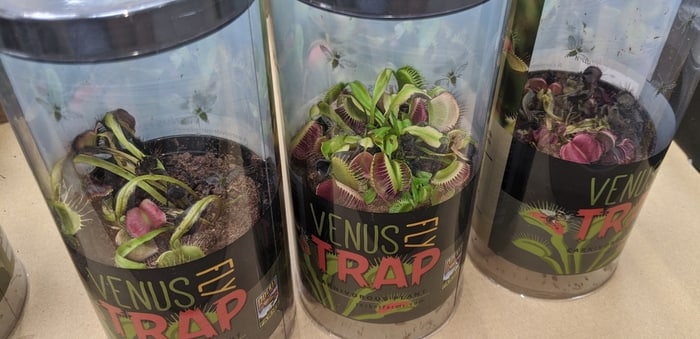
Local nurseries tend to offer more varieties and better quality plants. However, that is not always the case. As you have learned in this article, caring for carnivorous plants is challenging. They require particular environments. Most nurseries do not specialize in carnivorous plants, and some do not provide proper care.
Amazon and Etsy are suitable options to buy carnivorous plants online. But, between the two, I would suggest Etsy. Amazon does have some options, but there are so many scam sellers, many of them offering fake seeds. I had nothing but good experiences with Etsy. Do a quick search in Etsy for carnivorous plants, and you will find plenty of vendors with thousands of reviews. Do not get too concerned about the shipping; just make sure to be home when the plants arrive. The sellers are experts in the matter, and they know how to ship the plants.
Online nurseries are the final option. When ordering carnivorous plants online, the best strategy is to pick a carnivorous plant nursery. Those businesses are specialized in these plants and can give you all the details and care instructions for your carnivorous plant.
Here are a few good options of carnivorous plant nurseries:

